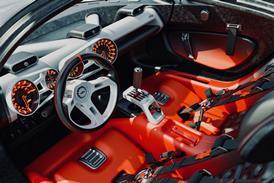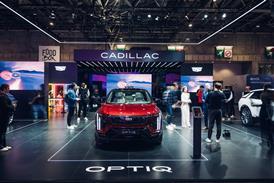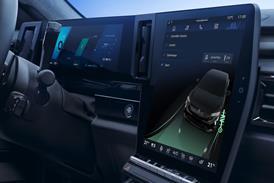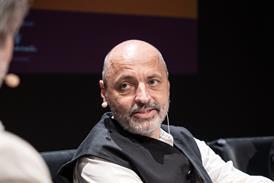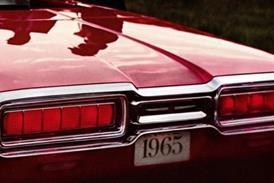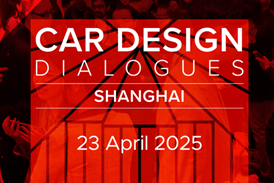





The third International Transportation Design Forum was held in February at Pforzheim University, near Stuttgart, Germany. The event was held in combination with the spring Transportation Design degree show.
The Design Forum saw the presentation of the Paul Pietsch Design Award, sponsored by Auto Motor und Sport magazine. The brief for the competition was to design a 'variable' SUV combining two bodystyle concepts, and seat at least four people. Eight design proposals were presented by two students from each of the participating schools:
- Musashino Art University, Tokyo, Japan
- Institute of Art and Design, Tsinghua University, Peking China
- Monash University, Melbourne, Australia
- Fachhochschule Pforzheim, Transportation Design, Germany.



The jury included design chiefs Chris Bangle (BMW), Peter Pfeiffer (Mercedes), Murat G�nak (VW), Martin Smith (Opel), Chris Bird (Ford) und Francois de Gaillard (Webasto).
First prize went to Pforzheim student Philipp R�mers for his 'PFaeno' concept. The prize for Best Marketing Strategy went to Shi Jia from Tsinghua University. Gao Fei, also from Tsighua University won the prize for Best interior. The prize for 'Best Sculpture' went to Musashino student Akinori Myoi for his concept 'Silver Crane'. Mark Johnson from Monash University won the Best Multimedia Presentation award for his 'OutBack' project.
PFaeno by Philipp R�mers is a 'New-Cargo-Vehicle Coup�', combining fun and practicality in one car. It has a unique cabin layout, where the driver and co-driver sit at the rear of the car, over looking the 'long bonnet' covering the cargo space. Although having larger dimensions, the vehicle's proportions evoke memories of a classic big GT-Coup�. The engine is situated under the seats of the driver and co-driver at the rear of the vehicle. Under the long bonnet there is a large load space with two additional seats hidden in the floor. The PFaeno can be loaded through a large front door, and can accomodate anything up to and including the height of a full size bicycle or quad. The driver and co-driver enter through the large sliding doors at the side, the seats then glide on rails into the driving position. To cover over the cargo area can also be extended up and forward, and all four seats can then be moved to the front, creating a 'stadium stand'.
Sixth semester Pforzheim University student Robert K�hn presented 'adapt' an SUV in the Golf size-class. The rear part of the car extends into a trailer for cargo, with the trailer wheels stowed inboard of the vehicles rear wheels when not in use. The roof extends upwards for open-air motoring.
'Outback' by Monash University student Mark Johnson is aimed at young people living in the country regions of Australia, for work and recreation. It offers the practicality of a utility, and is ridden like a motorbike or horse to allow more physical interaction and enjoyment while operating the vehicle. The Outback teaches its younger owner to become a safer driver through the use of interactive controls and limiting the speed of the vehicle to 60km/h. The design takes inspiration from motorbikes, hot rods, early model pick-ups and early Australian farm machinery such as the Sunshine Harvester.
Monash University student Nima Nourian presented '2020 Vision', a road service vehicle for Australia.The RSV is a multi function vehicle designed to cater for roadside assistance, incident response, vehicle shunting and towing for members of auto clubs. This is a purpose built vehicle that caters for all regions of the country. The RSV comes in three wheelbase lengths and can accommodate varying numbers of passengers. A shunt bar is located at the front for moving a vehicle to a safe location. If the RSV is the first to the accident scene, cameras located on the roof photograph the scene and this information is relayed back to other emergency services.The interior can be used as a waiting room for the members while their vehicle is being repaired.
The Pforzheim University graduation exhibition included work from graduating Diploma and Masters students from the Transportation Design degree courses. Also shown was a Volkswagen-sponsored project by the 5th and 7th semester students, as well as work from students in the earlier stages of the diploma and masters courses.
The graduating Diploma students were:
Claas-Hinrik Connors, Staphan Fahr-Becker, Andreas Thurner and Norbert Truxa.
'Circus Maximus' by Claas-Hinrik Connor is a futuristic grand prix concept for the year 2020. This concept brings the fascination of the old roman chariot races into our future. Vertical lift technology in combination with driven front wheels powers and balances the two wheeler. Most of the twin turbines power goes to the front wheels. The rest of the power is used to lift the rear of the vehicle with two directable nozzles. Side stabilisers guide the thrust to achieve cornering stability. The racers length is 18 ft, 9.3 wide and a maximum height of 4.6 ft. It has a top speed of 235 mph. To pilot the vehicle is a challenge and honour for every man.
Stephan Fahr-Becker presented a 2+2 BMW SportTouring conceived as a 'lifestyle-variant' of the 7 Series, combining aspects of a GranTurismo and a wagon bodystyle. This approach allows for the creation of a desirable niche vehicle, and avoids creating an excessively voluminous wagon bodystyle on the large 7 Series platform. Clamshell doors are used for ease of entry to the rear seats.









